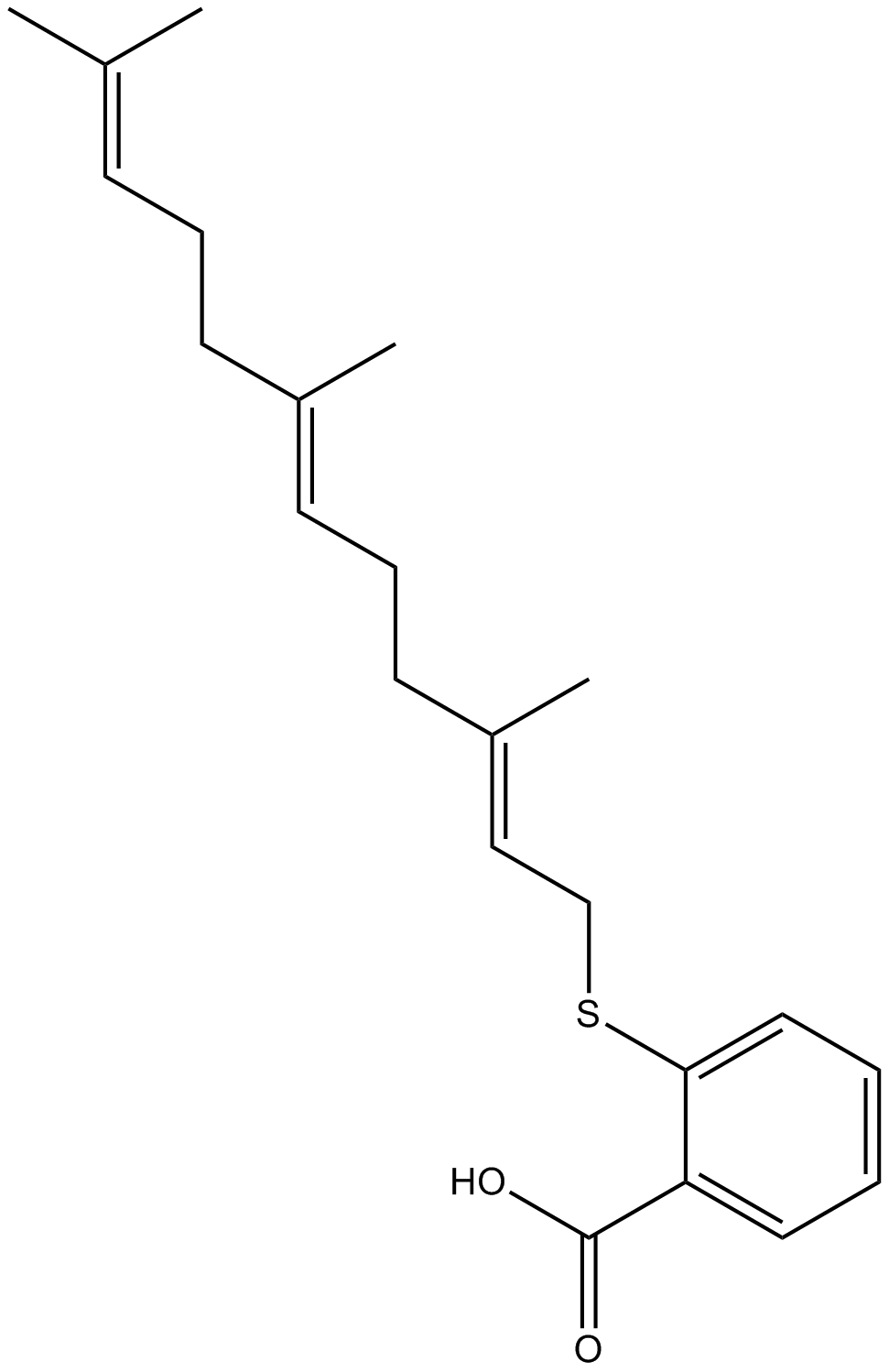Salirasib (Synonyms: FTS, Salirasib) |
| Catalog No.GC10528 |
A Ras inhibitor with anti-cancer and anti-atherogenic activity
Products are for research use only. Not for human use. We do not sell to patients.

Cas No.: 162520-00-5
Sample solution is provided at 25 µL, 10mM.
Salirasib (S-trans,trans-farnesylthiosalycilic acid [FTS]) is a synthetic small molecule that acts as a potent Ras inhibitor.[1]
The Ras family of small GTPases transmits extracellular signals, which are initiated by cell-surface receptors and serve to regulate various cellular processes including cell growth, differentiation, motility and cell death. Signals transmitted by activated Ras induce activation of multiple effectors. Ras signaling is activated in a large number of human cancers. Mutations of codons 12, 13 and 61 in Ras result in constitutively active Ras, and activating mutations of the three major Ras isoforms (H, K and N) have been found in more than 33% of human cancers. [2]
Salirasib mimics the carboxy-terminal farnesylcysteine carboxymethyl ester common to all Ras proteins, which acts as part of a recognition unit for anchorage and dislodges the active Ras protein from the cell membrane. Salirasib is readily taken up by cells, and once inside the cell it specifically disrupts the association of active forms of all Ras proteins (H-ras, K-ras and N-ras) with the inner surface of the cell membrane and with other cellular membranes. [1]
The in vitro activity of salirasib has been demonstrated in pancreatic cell lines and xenograft models. In the Panc-1 cell line, salirasib decreased the amount of RAS in a dosedependent manner, with a maximum decrease in Ras of approximately 50 % seen at concentrations of 25 to 50 μM. In the mouse xenograft models, salirasib inhibites Panc-1 tumor growth and is shown to be synergistic with gemcitabine, both inhibiting tumor growth and prolonging survival. Salirasib is tested in a phase I study in patients with solid tumors twice daily for 21 days every 4 weeks. Doses are escalated from 100 to 200, 400, 600, and 800 mg. Dose-limiting toxicity is not reached, but all three patients treated with 800 mg experienced Grade 1–2 diarrhea, preventing further dose escalation. The recommended dose for phase II studies is 600 mg bid. [3]
References:
[1] Ernesto Bustinza-Linares, Razelle Kurzrock , Apostolia-Maria Tsimberidou. Salirasib in the treatment of pancreatic cance. Future Oncol. (2010) 6(6), 885–891.
[2] Sari Schokoroy, Dolly Juster, Yoel Kloog, Ronit Pinkas-Kramarski. Disrupting the Oncogenic Synergism between Nucleolin and Ras Results in Cell Growth Inhibition and Cell Death. PLOS ONESeptember 2013, Volume 8, Issue 9, e75269.
[3] Daniel Laheru , Preeti Shah, N. V. Rajeshkumar et al. Integrated preclinical and clinical development of S-trans, trans-farnesylthiosalicylic acid (FTS, Salirasib) in pancreatic cancer. Invest New Drugs (2012) 30:2391–2399.
Average Rating: 5 (Based on Reviews and 30 reference(s) in Google Scholar.)
GLPBIO products are for RESEARCH USE ONLY. Please make sure your review or question is research based.
Required fields are marked with *




















